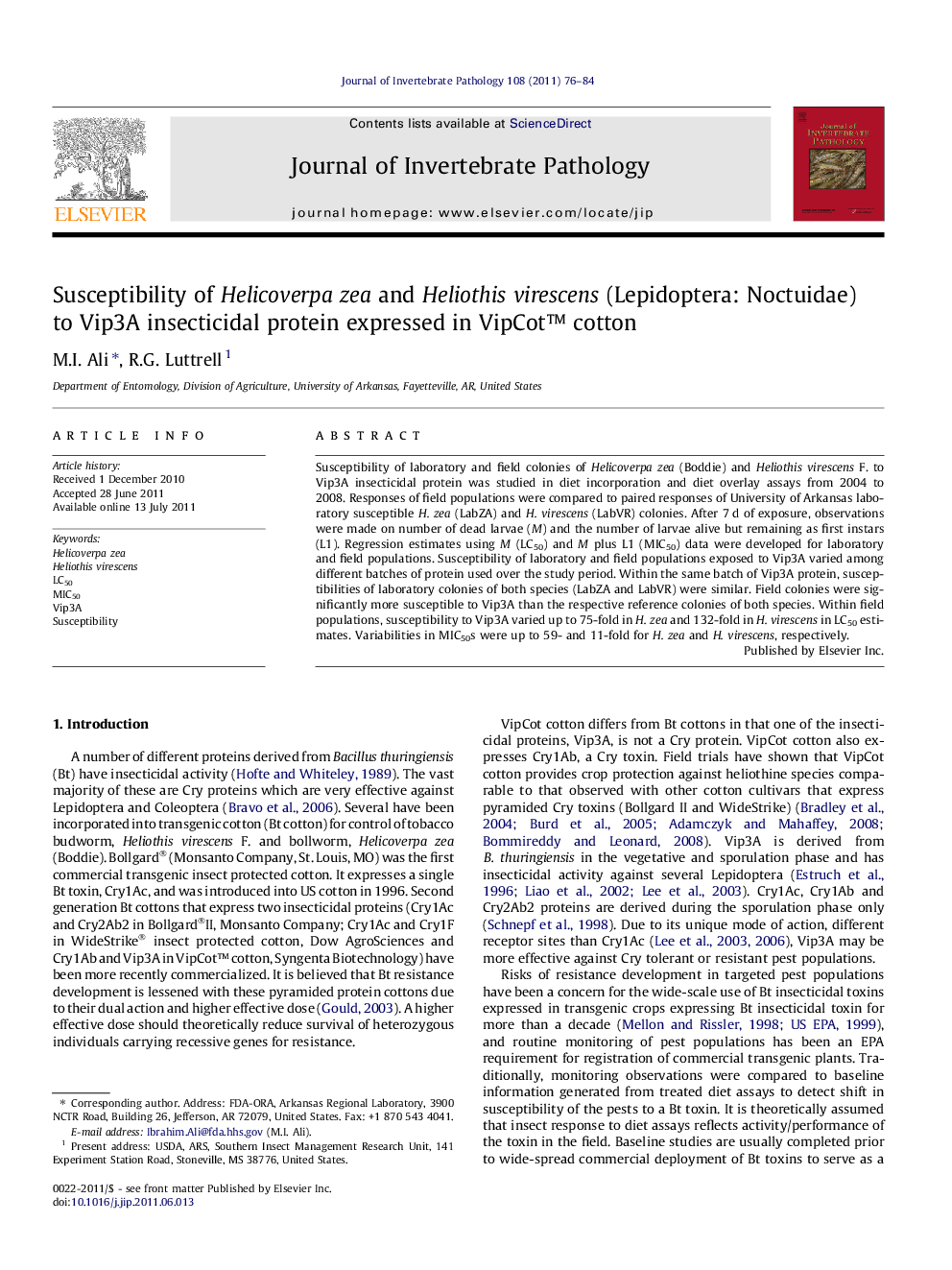| Article ID | Journal | Published Year | Pages | File Type |
|---|---|---|---|---|
| 4557957 | Journal of Invertebrate Pathology | 2011 | 9 Pages |
Susceptibility of laboratory and field colonies of Helicoverpa zea (Boddie) and Heliothis virescens F. to Vip3A insecticidal protein was studied in diet incorporation and diet overlay assays from 2004 to 2008. Responses of field populations were compared to paired responses of University of Arkansas laboratory susceptible H. zea (LabZA) and H. virescens (LabVR) colonies. After 7 d of exposure, observations were made on number of dead larvae (M) and the number of larvae alive but remaining as first instars (L1). Regression estimates using M (LC50) and M plus L1 (MIC50) data were developed for laboratory and field populations. Susceptibility of laboratory and field populations exposed to Vip3A varied among different batches of protein used over the study period. Within the same batch of Vip3A protein, susceptibilities of laboratory colonies of both species (LabZA and LabVR) were similar. Field colonies were significantly more susceptible to Vip3A than the respective reference colonies of both species. Within field populations, susceptibility to Vip3A varied up to 75-fold in H. zea and 132-fold in H. virescens in LC50 estimates. Variabilities in MIC50s were up to 59- and 11-fold for H. zea and H. virescens, respectively.
Graphical abstractSusceptibility of Heliothine Colonies to Vip3A ProteinFigure optionsDownload full-size imageDownload as PowerPoint slideHighlights► Susceptibility of Helicoverpa zea and Heliothis virescens to Vip3A was determined. ► Field populations of H. zea and H. virescens varied in susceptibility to Vip3A. ► Laboratory colonies of H. zea and H. virescens responded similarly to Vip3A. ► Field H. zea colonies appeared more susceptible to Vip3A than laboratory colonies.
